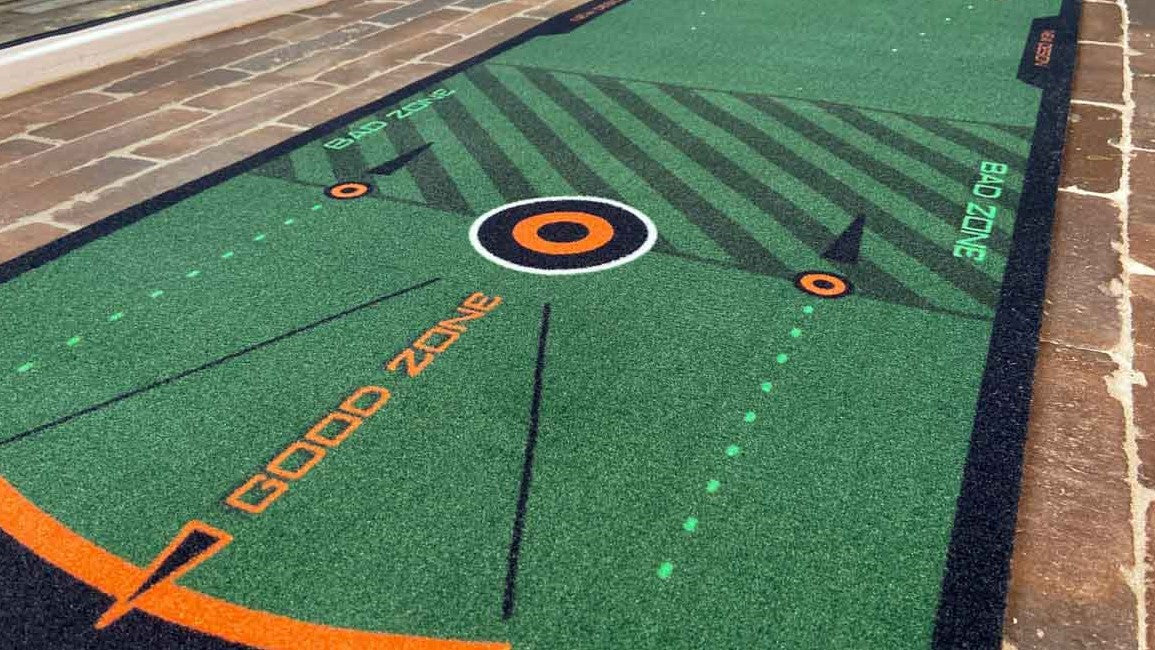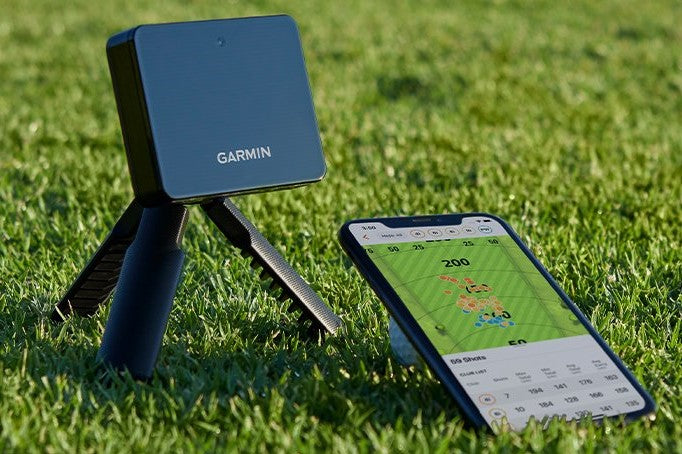What is the Swing Guide?
The Swing Gui training aid has been around for several years and is a relatively simple but useful device designed to help golfers master a powerful, repetitive swing .
The main purpose of the Swing Guide is to teach the feel of the correct action of the wrists during the swing so that golfers keep the clubhead square on the target line while maximizing the so-called lag, resulting in maximum clubhead speed. The longer you delay the release, the more lag you create. The moment of release occurs when your wrists snap back towards the ball during the downswing.
Practice with the Swing Guide
When using the Swing Guide, one end of the device is screwed low onto the grip. First, grip your club as you normally would when you want to hit the ball. Then, look where your thumb is on the grip. About 1cm above your thumb, click the Swing Guide into place.
Loosen the wing nut and remove the screw. Carefully spread the ends and click the Swing Guide onto the grip, not onto the shaft . If there is no space, you have gripped too low. When you address the golf ball with your clubhead, it is important that the Swing Guide is parallel to the shaft at that moment.
 Take your stance and practice your backswing without the ball. Then, with your lead arm extended, feel how the swing guide connects to your forearm at the top of the backswing. If the club is swung correctly, the free end of the swing guide will naturally contour to the forearm as the wrists naturally bend during the backswing. If the cupped end of the swing guide misses the arm or becomes off-center at the top of the backswing, this is a sign that the clubhead has opened or closed.
Take your stance and practice your backswing without the ball. Then, with your lead arm extended, feel how the swing guide connects to your forearm at the top of the backswing. If the club is swung correctly, the free end of the swing guide will naturally contour to the forearm as the wrists naturally bend during the backswing. If the cupped end of the swing guide misses the arm or becomes off-center at the top of the backswing, this is a sign that the clubhead has opened or closed.
During the downswing, the player is expected to keep the cup of the Swing Guide in contact with the arm until the release generated forces the wrists to snap back. In this way, the golfer gets a clear sense of the proper clubhead lag, which is a determining factor in the swings of all good players, but often lacking in those of higher handicap amateurs.
Putting with the Swing Guide
Ultimately, the Swing Guide can also be used as a putting aid. However, this requires some minor adjustments. The Swing Guide will then have to be turned 90 degrees and then tensioned using an elastic band. The photo next to this demonstrates this.
In addition, many putter grips are thicker than your irons these days, so be careful when attaching the Swing Guide to the grip. Once attached, the end of the swing guide should rest against your forearm just above your wrist. After which you can practice putting. The idea is to keep pressure on your forearm through the Swing Guide, which will ensure a pure stroke from your shoulders.
Is the Swing Guide worth buying?
Some golfers will be visually distracted by the Swing Guide during their starting position. Additionally, the curved end that comes into contact with the left forearm may be uncomfortable. However, any training aid that can help golfers learn the correct movement of the arms and wrists is worth considering. The Swing Guide is a useful tool for the high handicapper. Beginning players with a higher handicap are more likely to hit a corner, or slice.
For lower handicap players who are comfortable with lag and whose clubface control is evidenced by consistent draw or fade ball flight, there are other swing training aids that may be of greater value.
However, there are plenty of tour professionals who use the Swing Guide, including Masters and British Open winner Zach Johnson, Alex Noren, but also the best golfer in the Netherlands: Joost Luijten!
Ultimately, the choice of a golf training aid is almost as personal as the choice of their putter. But at least the Swing Guide is a lot more affordable compared to a new putter. Conclusion: the Swing Guide is definitely worth trying without too much damage to the wallet!
 Take your stance and practice your backswing without the ball. Then, with your lead arm extended, feel how the swing guide connects to your forearm at the top of the backswing. If the club is swung correctly, the free end of the swing guide will naturally contour to the forearm as the wrists naturally bend during the backswing. If the cupped end of the swing guide misses the arm or becomes off-center at the top of the backswing, this is a sign that the clubhead has opened or closed.
Take your stance and practice your backswing without the ball. Then, with your lead arm extended, feel how the swing guide connects to your forearm at the top of the backswing. If the club is swung correctly, the free end of the swing guide will naturally contour to the forearm as the wrists naturally bend during the backswing. If the cupped end of the swing guide misses the arm or becomes off-center at the top of the backswing, this is a sign that the clubhead has opened or closed.




